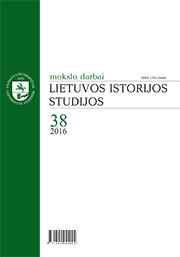VAKARŲ EUROPOS MEDICINOS PASLAUGŲ TEIKIMO MODELIS IR JO PRITAIKYMAS LIETUVOS DIDŽIOJOJE KUNIGAIKŠTYSTĖJE XVI–XVIII AMŽIUJE
WESTERN EUROPE’S MODEL OF MEDICAL SERVICE AND ITS ADAPTATION IN THE GRAND DUCHY OF LITHUANIA IN THE 16–18TH CENTURIES
Author(s): Monika RamonaitėSubject(s): Modern Age, Health and medicine and law
Published by: Vilniaus Universiteto Leidykla
Keywords: the model of medical assistance; medical doctors; barbers-surgeons; pharmacists;
Summary/Abstract: The object of this research is the Western Europe model of medical assistance and its application in the Grand Duchy of Lithuania (further – GDL) during the 16th–18th centuries. This model of medical assistance was formed in the 13th century and the main impact of its formation was provided by new academic medical education in European universities. This model of medical assistance consisted of medical doctors or physicians, barbers-surgeons and pharmacists. They became the unique legal medical personnel in many European countries. All other healers and medical practitioners became illegal and illegitimate, though they have not disappeared and continued to exist behind official medicine. The research is focused on medical practitioners who were working in the Grand Duchy of Lithuania. This article presents the characteristics of their functions and the legitimacy of their activities. The researched proved that the Western European model of medical assistance wasn’t fully transmitted to and applied in the GDL. The main reason for that was the lack of an academic medical education institution in this country that was not rectified until the end of the 18th century. All medical science ideas and concepts which came from Western Europe to the GDL were mixed, combined and not fully applied. There was also a certain level of differentiation among medical doctors. They were mainly strangers who worked in courts of rulers and nobles, their services were too expensive for the main part of the GDL population. The service of barbers-surgeons and pharmacists were similar to other European countries. On the other hand, barbers-surgeons and pharmacists worked only in the towns and were unavailable for that part of the GDL population that had resided in rural areas. Due to other medical personnel, unskilled physicians were also allowed and tolerated.
Journal: Lietuvos istorijos studijos
- Issue Year: 2016
- Issue No: 38
- Page Range: 9-31
- Page Count: 23
- Language: Lithuanian

